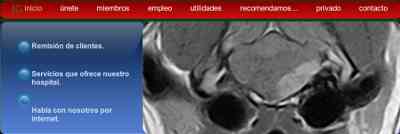The facial nerve exits the brainstem in the cranial medulla and course out of the
calvarium passing near the inner ear (diseases here cause a number of facial nerve problems
which have already been discussed).
It then travels cranially over the ramus of the mandible to
distribute to the muscles of facial expression.
Damage of the facial nerve results in decreased
movement of the ear, eyelids and buccal muscles.
The menace response, palpebral reflex, lip
reaction and ear twitch response become decreased to absent. In evaluating the menace
response, it is necessary to determine that the animal is visual, either by performing a dazzle
response or evaluating the animalãs visual behavior.
The palpebral reflex should be checked
with the corneal reflex, indicating that the problem is not sensory through the trigeminal nerve.
The lip retraction can be checked against response to placing a probe gently into the nares.
The
ear response may be checked by observing the animalãs head shaking or pulling the head away.
Remember to always check the tear production with the Schirmerãs tear test.
Acute unilateral or bilateral facial nerve paralysis may be seen in adult dogs, particularly
in the cocker spaniel. There are no other signs of neurologic disease.
There is no evidence of
otitis on physical, neurologic or radiographic examination.
EMG changes (fibrillation potentials
and positive sharp waves) are usually present in the muscle innervated by the facial nerve, only.
There is no therapy; but, if attention is given to supporting tear production, the animal does not
appear to have difficulty living with its deficits. It is felt that this represents an autoimmune
disease and immune therapy may be indicated. |


 miles de casos clûÙnicos
miles de casos clûÙnicos












